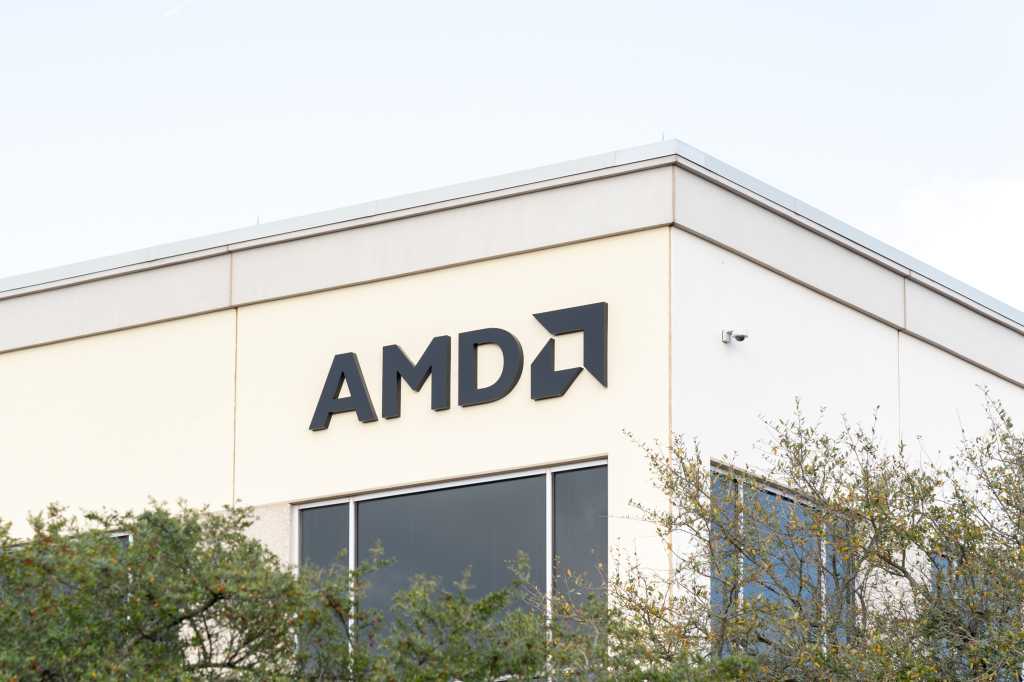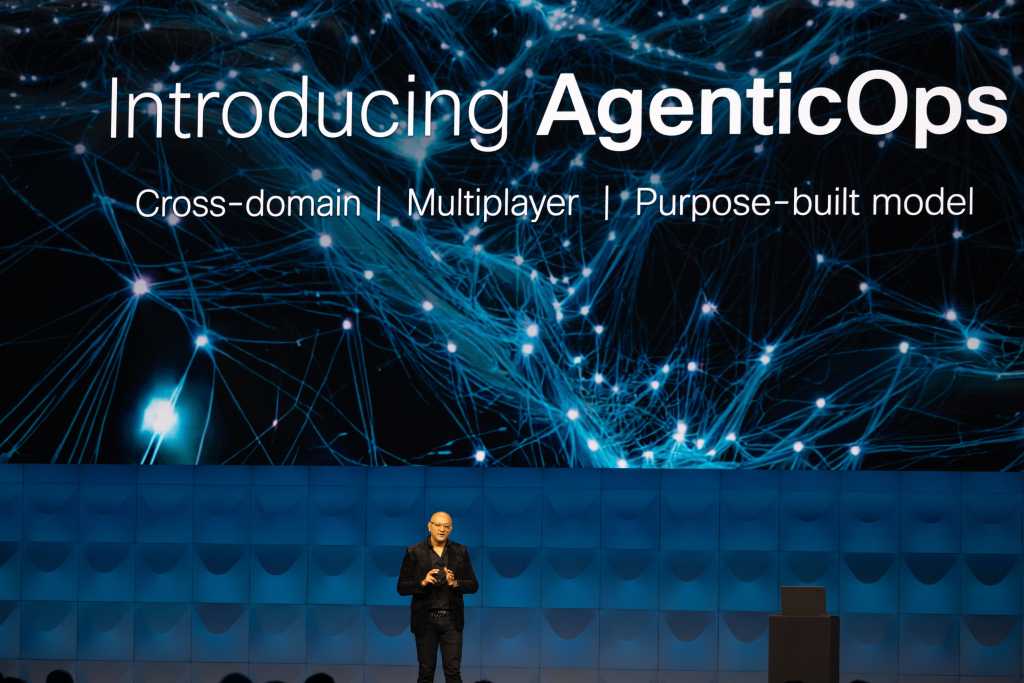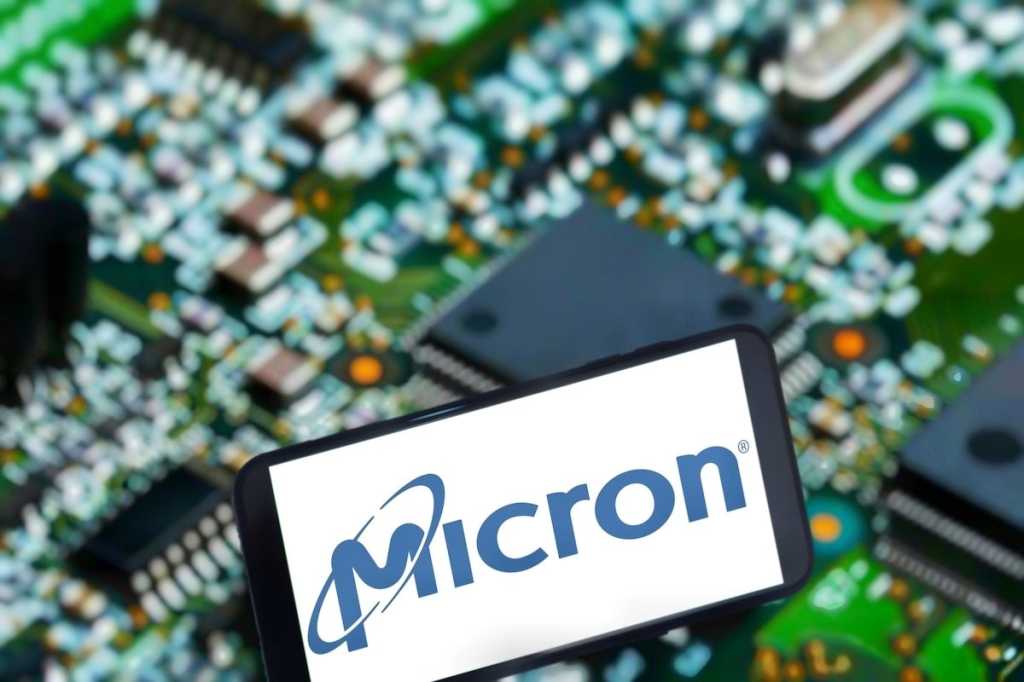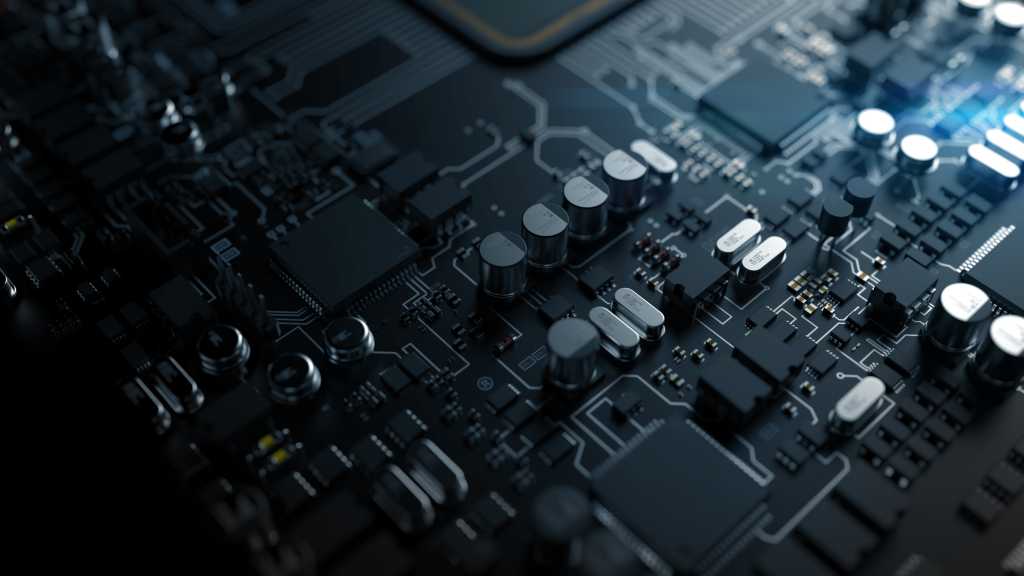Qualcomm has enabled what one of its executives said was a strange and “most interesting conversations– and it was with a pair of generative AI-powered smart glasses.”
In a talk at Augmented World Expo, Ziad Asghar, senior vice president of XR & spatial computing at Qualcomm, said that the chat wasn’t just a simple demo. It was a glimpse into how we’re turning AI glasses, which have long been considered an accessory, into a standalone, comprehensive capable device.
The company also unveiled its Snapdragon AR1+ Gen 1 processor, which is 26% smaller than the previous generations, to power the demo.
“On Tuesday, as I stood on stage at AWE USA, the world’s largest XR conference, I chatted with an AI assistant through a pair of RayNeo X3 Pro smart glasses powered by Snapdragon technology, – with AI inferencing done on the glasses without relying on the cloud or an internet connection,” said Ziad Asghar, senior vice president of XR & spatial computing at Qualcomm, in a statement.
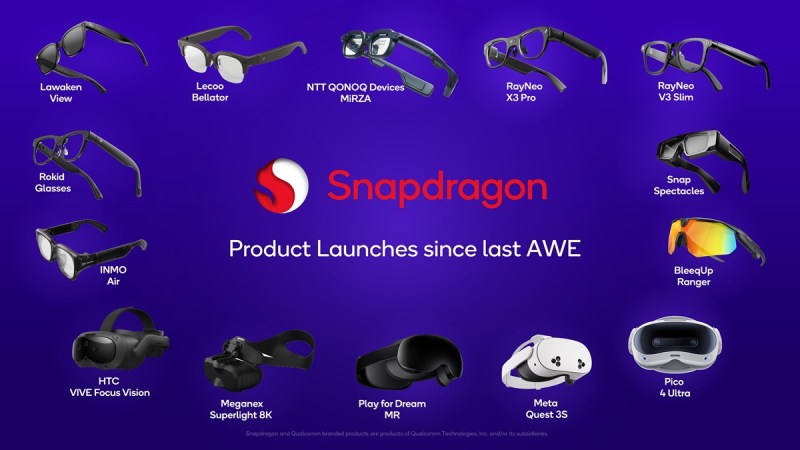
He said the premise is simple: AI glasses are set to operate independently without needing to be paired with a smartphone or the cloud.
“In the near future, I will be able to leave my phone in my pocket or in the car and just wear my smart glasses during a supermarket run, as I showed off during my AWE demo,” Asghar said. “While on stage, I was at the ‘supermarket’ and asked my glasses for help with fettuccine alfredo I needed to make for my daughter’s birthday party.”
In response, the AI assistant, running Llama 1B, a small language model (SLM), understood the specific request and provided him with the information he needed through audio and text displayed in the lens of his glasses.
This demonstration was a world’s first: an Autoregressive Generative AI model running completely on a pair of smart glasses. No phone. No cloud. Just the processor powering the glasses themselves. And this industry milestone was pulled off in front of a live audience, he said.
Topping this off was the announcement of our Snapdragon AR1+ Gen 1 processor, which is 26% smaller than the previous generations and brings enhanced image quality, size, power improvement and the ability to run SLMs. All four of these traits are critical for compact smart glasses.
Together, they open the door to a revolution in AI smart glasses, with thinner, lighter and more varied glass designs paired with enough power to run AI assistants right on the device.
So, while the demo was just one example of what you can do with completely on-device AI on smart glasses, the benefits that stem from the work going on at Qualcomm, are long-lasting and massive.
Expand and evolve

There isn’t one path that XR headsets and smart glasses will take, especially since we also offer mixed reality processors such as Snapdragon XR2 and Snapdragon XR2+ that also have significant inferencing capability on the device.
Asghar said he anticipates several different form factors, from standalone glasses powerful enough to run AI models themselves, to more lightweight frames linked to phones or nearby small computing “pucks” that can link anything from a car to a tablet. What Qualcomm is doing with the portfolio is getting ready for the future.
Whether it’s cloud computing, on-device, or a hybrid path that incorporates both, the boost in on-device AI capabilities will offer a seamless and ultra-low latency user experience that’s also security-focused. That will be critical as AI-powered smart glasses find their way into sectors with mission-critical needs and users demand more personalization, more privacy features, and an end-to-end agentic experience.
“We’ve already seen significant momentum in the XR industry over the last year. In December, we collaborated with Google and Samsung to launch Android XR, an operating system designed with AI at the core of the XR experience,” he said.
This comes as the industry continues to expand, with Meta’s Ray-Ban Glasses, as well as more ambitious hardware such as Meta Orion, which it bills as the company’s first true augmented reality glasses with their own digital overlay.
In addition, Asghar said we’ve seen glasses from Rokid, RayNeo, XREAL and more. In March, BleeqUp launched a pair of AI-powered sports glasses.
Imagine what these companies will be able to accomplish with smaller, more powerful platforms like Snapdragon AR1+ Gen 1, enabling sleeker form factors that don’t compromise on the ability to run AI models, Asghar said.
Smarter, more aware
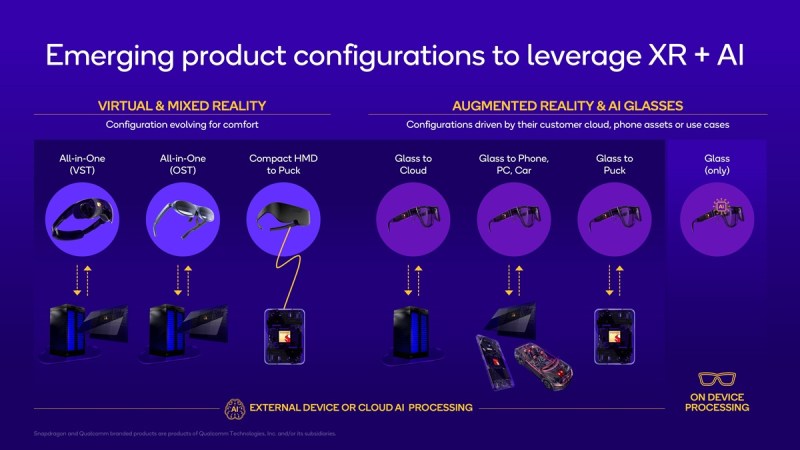
While getting smart glasses down to a reasonable size and fit is critical, another advance that Snapdragon AR1+ Gen 1 brings is camera capabilities typically found in premium smartphones, which is equally important to where they’re evolving.
That ability to see the world that you see – with every minute detail – will open new avenues of multimodal inputs. That capability is critical for AI to not only better understand what you see, but also connect the dots in a way that lets it proactively offer suggestions or additional context on an object or location.
And while smart glasses will be able to run SLMs on their own, that doesn’t mean they won’t work in tandem with a constellation of devices around you, whether it’s your smartphone or PC. In fact, I see smart watches and new devices such as smart rings or other wearable sensors that will enable new modalities of input as they work in concert with your glasses.
At Qualcomm Technologies, we are preparing for a multifaceted future with a wide range of device combinations by creating a modular architecture that allows our partners to tap into the spatial computing industry to deliver a superior experience to consumers.
That’s why I know this conversation with my smart glasses’ AI assistant is such a pivotal moment – it really marked the beginning of something huge. The work we’re doing is just starting to unlock the game-changing potential of a deeper and more personalized agentic experience.
“A world’s first on-glass Gen AI demonstration: Qualcomm’s vision for the future of smart glasses,” said Qualcomm. “Our live demonstration of a generative AI assistant running completely on smart glasses – without the aid of a phone or the cloud — and the reveal of the new Snapdragon AR1+ platform spark new possibilities for augmented reality.”

